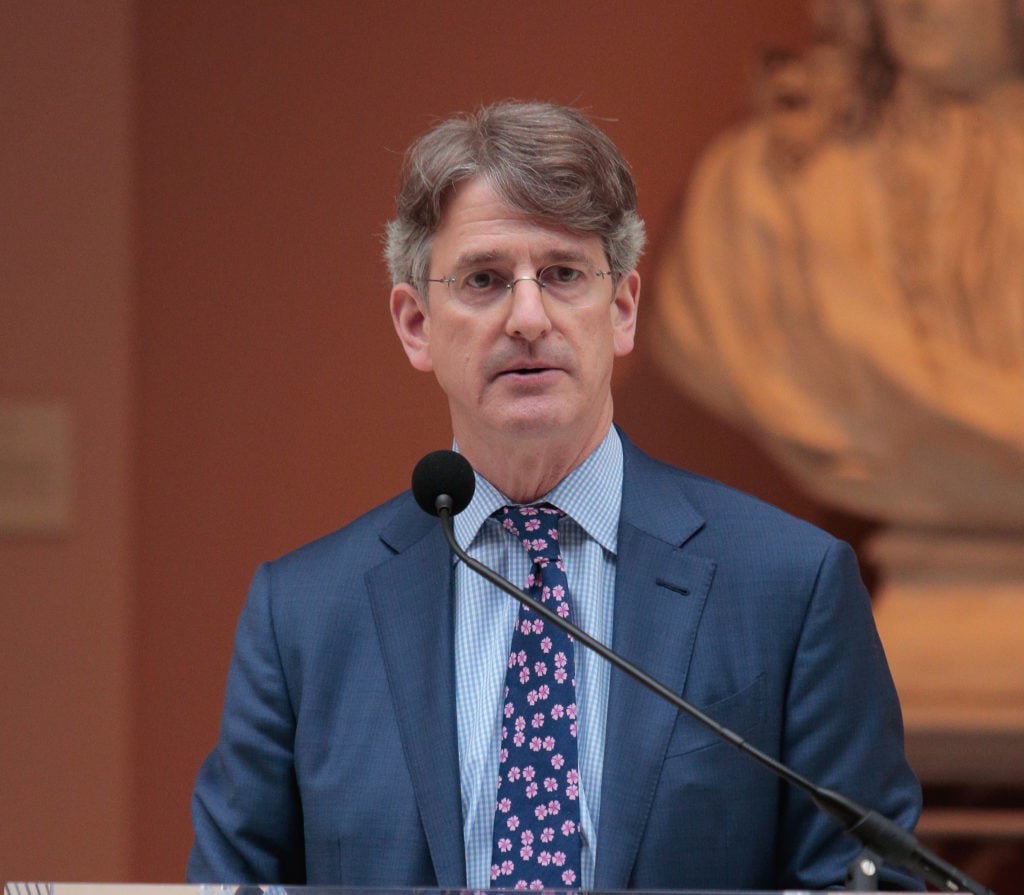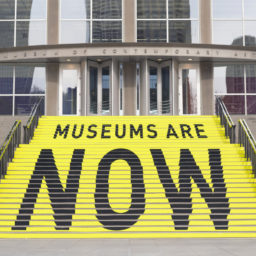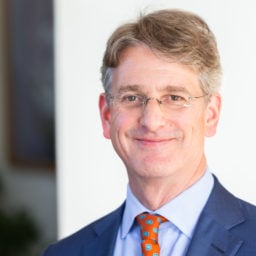Every Monday morning, artnet News brings you The Gray Market. The column decodes important stories from the previous week—and offers unparalleled insight into the inner workings of the art industry in the process.
This week, three stories about the art industry’s predilection for the past…
SEARCH AND EMPLOY
On Tuesday, news broke that former Metropolitan Museum of Art director Thomas P. Campbell will replace Max Hollein as director of the Fine Arts Museums of San Francisco (FAMSF), the organization that oversees the de Young Museum and the Legion of Honor. Hollein, of course, is the dude who just replaced Campbell at the Met a few months ago, making the whole thing feel weirdly like watching two rich kids trade packed lunches while sitting in the world’s best cafeteria.
So how does this hire, which installs another middle-aged white guy with an uneven track record behind the controls of a major institution, happen in our politically charged, diversity-conscious environment?
Well, my colleague Julia Halperin relayed that the FAMSF’s expedition for a director lasted six months. She also quoted a statement from board member Carl Pascarella calling it a “thorough international search” that reviewed “an extensive and diverse group of highly qualified candidates.” The New York Times reported that the process was even guided by a search firm (AKA an executive headhunter), which theoretically would have presented the FAMSF’s board with a list of options beyond their scope of knowledge and professional circle.
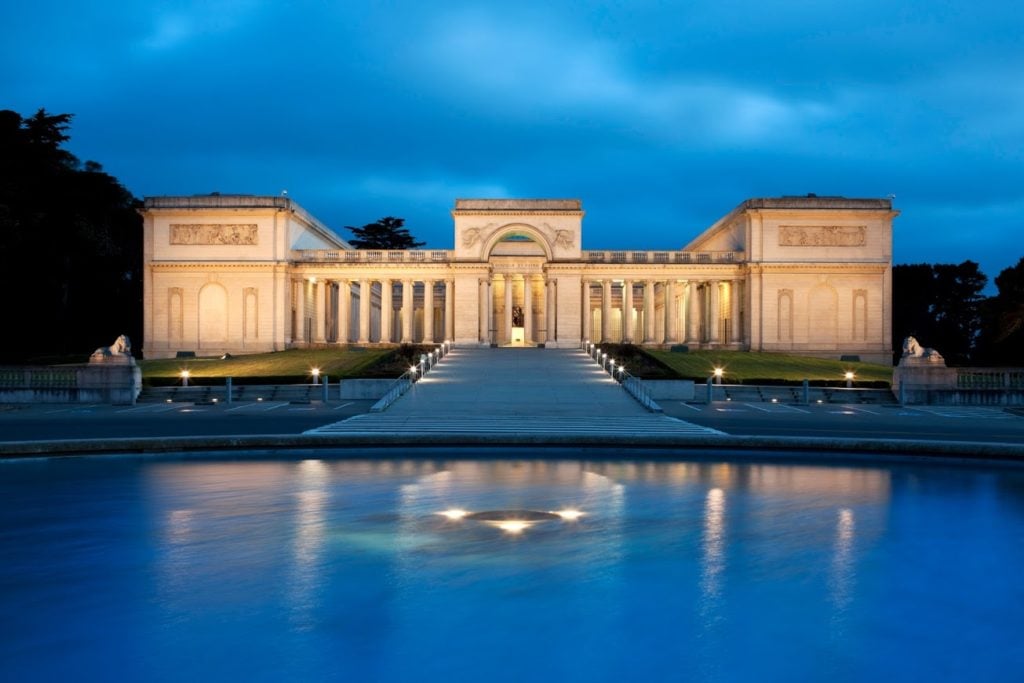
Legion of Honor in Lincoln Park. Photo: Steve Whittaker, ©FAMSF. Image courtesy of the Fine Arts Museums of San Francisco.
Here’s the thing, though: Search firms are paid contractors. Their job isn’t to find the best people in a neutral environment. It is to find the best fit for the particular client. And in theory, if the client isn’t particularly interested in being progressive, it would be self-destructive for the search firm to try to force-feed them progressive choices. I mean, it’s not like you’d expect a waiter to keep his job if he started secretly canceling flank steak orders and serving diners the kangaroo tartare because it’s “simply too divine to ignore,” right?
Explicit bias doesn’t have to be involved here, either. As I covered during the firestorm over the Brooklyn Museum’s hiring of Kristen Windmuller-Luna (who is Caucasian) as a curator of African art, there are structural flaws in the diversity pipeline to top museum jobs. So if a cultural institution legitimately just wants candidates with, say, previous experience in a similar role, guess what? It steeply slants the hiring process in favor of the most white-bread candidates (in every sense of the word). Case in point: According to a 2017 study by New York’s Department of Cultural Affairs, 74 percent of senior staff at New York cultural institutions were white.
Look, I recognize that, in November 2018, there’s an argument that even asking how “Tapestry Tom” Campbell got his new gig is kind of like asking how someone ended up calling their partner the wrong name in bed: The “what” is so galling that the “how” becomes irrelevant. But I think the answer does matter, precisely because it implies the issue might not be the methodology. (At least, not if we take the FAMSF’s board at its word.) Even the most progressively designed hiring process can explode like an over-microwaved potato if the people making the final decision simply prefer to be small-c conservative.
Since science often needs old positions held by old gatekeepers to literally die out in order to make way for new minds, physicist Max Planck once said that the discipline will only “advance one funeral at a time.” Qualified as Campbell may be, his new gig is more evidence that Planck’s adage may apply to the cultural sector, too. And if so, the consequences radiate far beyond one key hire in the Bay Area art scene.
[artnet News]
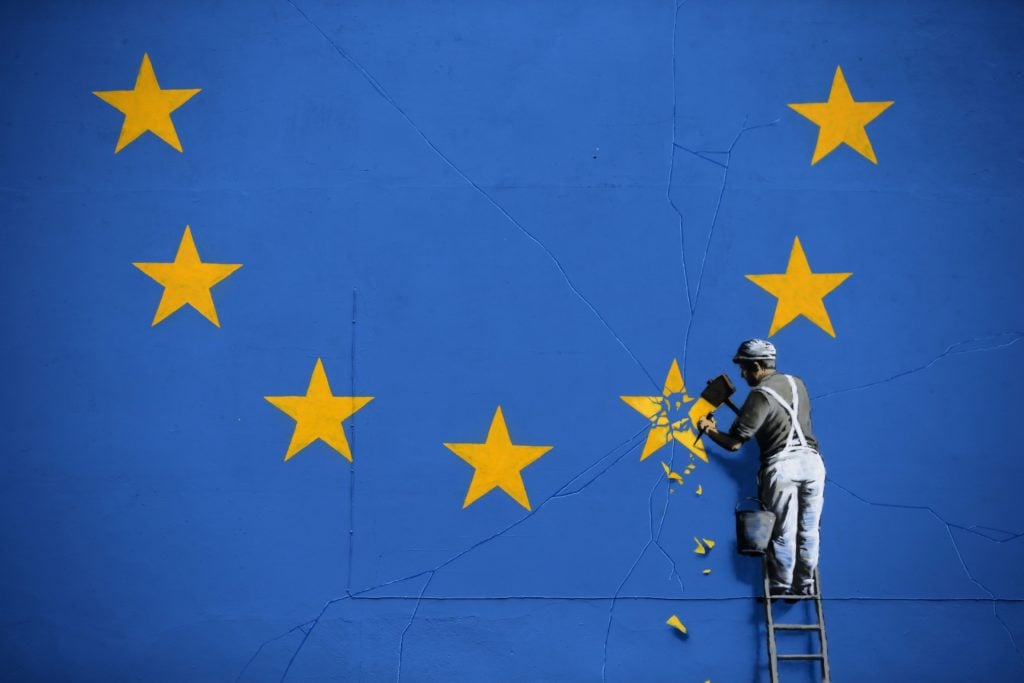
Banksy mural depicting a workman chipping away at one of the stars on a European Union flag in Dover. Photo: Daniel Leal-Olivas/AFP/Getty Images.
SO BAD, IT’S GOOD?
On Thursday, Joe Murphy of the Evening Standard relayed some of the apocalyptic fears major UK cultural institutions have expressed to the British government over Brexit since the nation voted “Leave.” A Freedom of Information request unsealed the memos, which were sent by leaders at the Victoria & Albert Museum, the Natural History Museum, the Royal Museums Greenwich, and others.
According to Murphy, various institutions “believe they could be hammered with import taxes, the loss of key staff, and huge cuts in vital research funding,” whereas others “think they could be forced to temporarily close their doors in the case of a botched Brexit deal.”
Amid all these concerns, I want to focus on one in particular. V&A director (and former politician) Tristram Hunt told the Evening Standard that his museum’s “ability to hold blockbuster exhibitions while having to pay import duties would be really problematic” in the event of a no-deal Brexit. (This scenario entails the EU immediately clamping down all of its most extreme restrictions on the UK for failing to implement a formal withdrawal agreement by the March 29, 2019 deadline.) For a sense of scale, one of Hunt’s unsealed memos discussed the possibility of the V&A being punched in the mouth with an import bill of £25 million.
But here’s something wild to consider: Hunt’s fear could secretly be a positive for British museums. The reason, as I’ve written before, is that an ever-growing pile of evidence suggests that blockbuster exhibitions are actually a terrible strategy. They don’t cultivate new repeat visitors, they cost insane amounts of money, and according to a new study, they don’t fit within the existing budgets of almost any museum looking to host traveling shows. All of which might help explain why the Met concluded, after careful study during its agony in the garden over admission fees, that blockbusters can’t be consistently counted on to generate profit.
In a sense, then, a no-deal Brexit would take the pains that British museums have been content (even enthusiastic) to tolerate up to now and aggravate them to unjustifiable levels. It would be a little like your parents catching you trying out one of your first cigarettes, then immediately forcing you to chain-smoke the rest of the pack to try to break you of the habit once and for all.
Of course, a no-deal Brexit might also plummet the whole rest of the UK into anarchy, with borders hardening overnight, citizens and jobs fleeing en masse to EU nations, and international trade collapsing to the point that roving bands of marauders start siphoning petrol out of your car and selling it back to you at extortionate prices with whale-bone daggers pressed against your throats. But hey, at least museum programming will be more sustainable!
[Evening Standard]
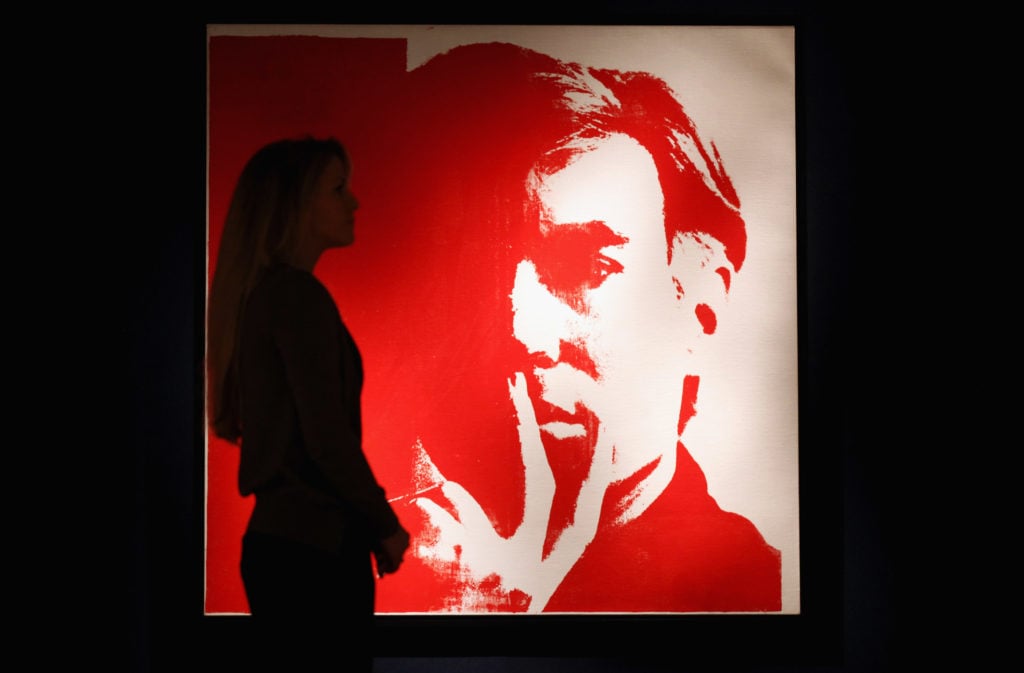
A Warhol self-portrait at Christie’s. (Photo by Oli Scarff/Getty Images)
BETTER LATE THAN NEVER
Finally this week, on Halloween, Katya Kazakina of Bloomberg surveyed Andy Warhol’s flagging market in advance of the legend’s soon-to-debut retrospective at the Whitney—his first in the US in nearly three decades. Her piece ends with a tantalizing question: Is it time for Warhol’s less in-demand late work to begin climbing in value?
I suspect so, but more because of economics than aesthetics.
With over 1,000 Warhol pieces being consigned annually, Kazakina reports that total auction sales of the artist’s work declined from about $570 million in 2014 to about $231 million in 2017. She also relays that about 75 percent of those consignments are prints and multiples, leading to this declaration from Lévy Gorvy co-founder Brett Gorvy: “The more generic, repetitive material that comes to auction season after season—that’s where the weakness is.”
Look, Andy Warhol is an inflection point in the arcs of both art history and pop culture. Denying as much now or later would be as crazy as the media-studies field suddenly deciding, “You know what, we really overrated the impact of this whole TV thing for the last 50 years or so. Let’s revise!”
Meanwhile, every passing year sees the ranks of the world’s wealthy expanding like a mass of yeasty dough in a hot oven. A study this spring concluded that the US alone welcomed 700,000 new households to millionaire status in 2017. A branded art collection is now firmly entrenched as a must-have for almost any self-conscious rich person, and Warhol stands as a pillar of that expectation.
However, the great early works have already inflated to ridiculous valuations, as evidenced by hedge-fund heavyweight Ken Griffin’s acquisition of Warhol’s Orange Marilyn (1964) for over $200 million. And aspirational new-money collectors will still want unique works, not also-ran editions and multiples.
So guess what’s available? That’s right, the late works! (Similar trajectories can of course be mapped onto the markets of other artists, too, including Picasso and de Kooning.)
Meanwhile, the dealers who control the inventory know there’s unmet Warhol demand among mini-millionaires. And the institutions, curators, and art historians who understand Warhol’s power know the early works have been done to death. So everyone with an Andy stake is incentivized to build up a rich body of shows and scholarship around his (allegedly) under-appreciated late output. Everybody wins!
And with Donna De Salvo, who curated the upcoming Whitney retrospective talking like this:
“Because he is so well known, how do you get people to think: ‘I’ve never seen that before? I never thought of Warhol that way?’” De Salvo said in a recent interview at the museum. “That was a huge thing for me to figure out: How not to reinforce just the same old Warhol.”
… I think it’s a mortal lock that this process is already underway.
[Bloomberg]
That’s all for this week. ‘Til next time, remember: Even if you’re through with the past, the past may not be through with you.
